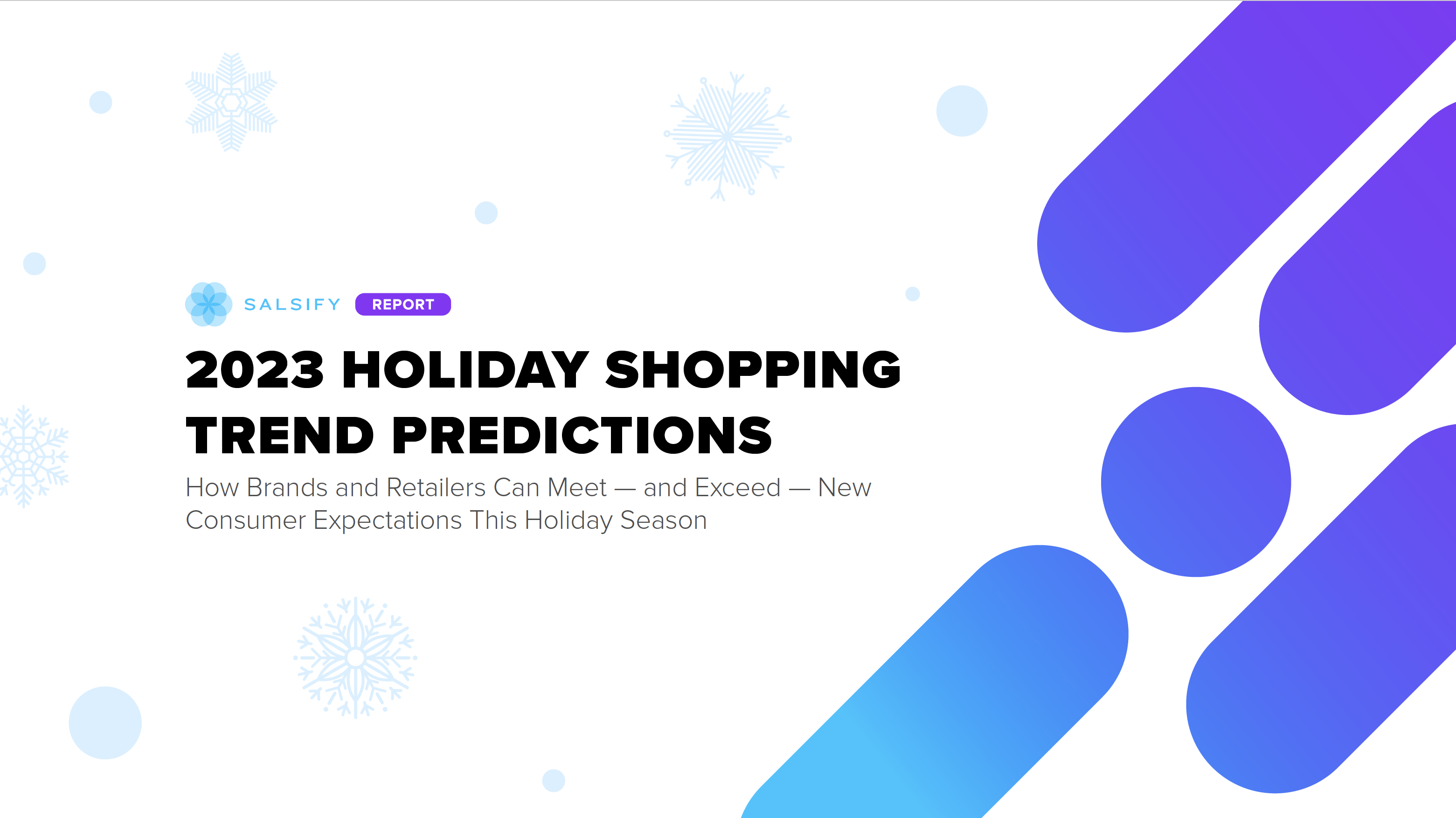

The Complete Product Page Toolkit
Download our toolkit to get everything you need to build winning product pages across the digital shelf.
DOWNLOAD TOOLKITPIM
Manage all product content in one central system of record.
Syndication
Easily syndicate product content to every consumer touch point.
Enhanced Content
Enrich product pages with below-the-fold content and rich media.
GDSN Data Pool
Synchronize standard supply chain, marketing, and ecommerce attributes globally.
Grocery Accelerator
Leverage the first-ever category-wide PXM accelerator in the grocery industry.
Digital Shelf Analytics
Continuously optimize your organization’s product content syndication.
Catalog Sites
Share secure, on-brand, and always up-to-date digital product catalogs.
Automation and AI
Automate business processes and enhance Salsify workflows with AI.
PXM Platform, Integrations, and APIs
Integrate the PXM platform with the rest of your enterprise systems architecture.
Supplier Onboarding
Accelerate supplier onboarding while ensuring your schema requirements are met.
Product Listing
Sell products faster with Product Listing.
Content Enrichment
Increase online conversions with Content Enrichment.
Automation
Save time and increase operational efficiency with retail automation.
SXM Platform, Integrations, and APIs
Integrate the SXM platform with the rest of your enterprise systems architecture.
Syndication Network
Automate how you exchange product content data to the digital shelf.
Enhanced Content Network
Turn product pages into product experiences with Enhanced Content.
Commerce Platform Integrations
Create winning product experiences everywhere shoppers are, including on owned sites.
GDSN Data Pool
Synchronize standard supply chain, marketing, and ecommerce attributes globally.
Open Catalog
Connect to the digital shelf faster with an open, standardized, and free product catalog.
Resources
Resource Library
Explore our ecommerce resources to get everything you need to win on the digital shelf.
Blog
Read our blog to get actionable insights for navigating changing markets and industry demands.
Webinars
Watch our on-demand ecommerce webinars to gain expert advice and tips from our community of industry leaders.
Knowledge Base
Investigate our knowledge base to build your Salsify skills and understanding.
Product Updates
Explore the latest news and updates for Salsify products.
API
Examine our comprehensive API and webhook guides to start working with Salsify quickly.

Download our report for emerging consumer trends with direct insights from shoppers that will help you thrive on the digital shelf.

From upgrading living spaces — ranging from sensible to lavish — to improving comfort or aesthetics (or both), home improvement brands will always have a steady stream of consumers clamoring for the latest and greatest products.
As a result, home improvement brands are sitting pretty. To remain so, however, brands need to adjust to current ecommerce home improvement trends.
According to home improvement supplier Kitchen Infinity, Google searches for home remodeling have more than doubled in the last few years — and experts expect these trends to continue.
But what’s the catch?
As shopping continues to move between brick-and-mortar stores and online offerings, home improvement brands need a way to capitalize on the omnichannel commerce movement and capitalize on ecommerce home improvement trends.
In this post, you’ll learn about three of the top trends for home improvement ecommerce — and how the right online strategy can help build better brands.
There’s no doubt that the home improvement market is on the rise. Data from Statista estimates the global home improvement market to be worth $866 billion in 2023.
Companies can’t simply hammer away at the same selling strategy if they want to see reliable results that keep up with the growing demand in the industry.
For home improvement brands, the message is clear: Flexibility is essential if you want to succeed in the unpredictable world of post-pandemic ecommerce.
Here are three trends to watch as this market evolves.
Mobile makes the difference when it comes to effective home improvement ecommerce.
As Retail Dive reports, consumer downloads of mobile apps from popular home improvement suppliers such as The Home Depot, Lowe’s, and Menards hit record highs in the last several years, and downloads of mobile tools like Room Planner were up more than 200%.
As a result, it’s critical for companies to have mobile apps that not only live up to consumer expectations but also handle the sheer volume of searches and transactions.
Here’s why: just over half of consumers will abandon sites if mobile loading takes longer than three seconds or mobile pages are hard to navigate. Slow load times lead to bounce rates that are consistently higher than their desktop counterparts.
For home improvement brands to succeed in this mobile-first market, it’s critical to design and deploy apps that are responsive, reliable, and quick, as well as naturally integrated into omnichannel customer experiences.
Potential buyers should be able to pick up where they left off on desktop devices or get in touch with customer service agents directly without having to restart their entire purchasing experience from scratch.
Ecommerce home improvement trends also include the prioritization of personal experiences. According to Accenture, 75% of consumers prefer brands that offer personalized online experiences.
For home improvement ecommerce, this speaks to the need for intelligent personalization.
Given the sheer number of faucets, toilets, and kitchen cabinets available, it’s easy for consumers to get overwhelmed by the variety and feel unsure of what differentiates one brand or style from the next.
By deploying intelligent and adaptable artificial intelligence (AI) tools across ecommerce sites, however, it’s possible to help prospective customers zero in on what they want and streamline the sales process.
Customers want flexible shopping options, such as buy online, pickup in store (BOPIS) to speedy and cost-effective last-mile shipping.
An overall impact to consider: the pace of physical to digital transition has accelerated by approximately five years, according to experts.
For home improvement brands to succeed in this new market, flexible shopping is a must. Your brand should offer a variety of shipping and pickup options as well as integrate real-time supply and inventory monitoring.
This will help keep customers in the loop and notify them of potential delays tied to ongoing shipping and logistics challenges.
In practice, this means deploying tools capable of collecting, curating, and collating inventory data to provide on-demand insight for staff and consumers alike.
As online growth for home improvement brands continues, a constructive approach is critical. Prioritize digital sales and maximize your brand’s potential by keeping up with ecommerce home improvement trends and implementing recommendations.

Download our toolkit to get everything you need to build winning product pages across the digital shelf.
DOWNLOAD TOOLKITDoug Bonderud (he/him) is an award-winning writer with expertise in ecommerce, customer experience, and the human condition. His ability to create readable, relatable articles is second to none.
Standing out on the digital shelf starts with access to the latest industry content. Subscribe to Below the Fold, our monthly content newsletter, and join other commerce leaders.